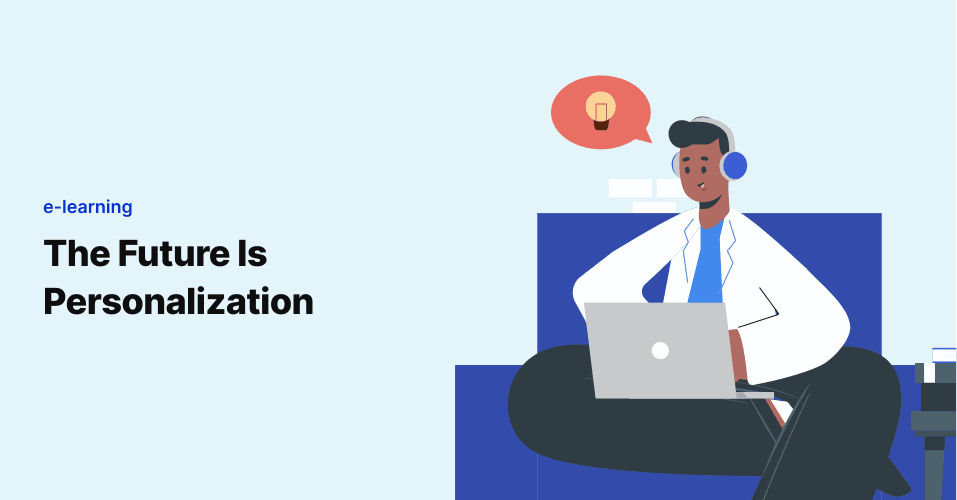
Personalization: Unleashing the Future of Training and Education in Healthcare
A dynamic landscape has become the reality of healthcare today.
The biggest question is - How to keep up? …

Imagine: You're cooking a delicious meal, and everything's humming along. Suddenly, one dish needs a pinch of oregano. Bingo! It appears right then, passed by a helpful hand.
Or, say you're filling out a crucial form, mind racing when someone swoops right in with the missing info and helps you fill it out in a jiffy.
That's Just-in-Time training in action, your supportive friend delivering the perfect bite-sized knowledge exactly when you need it.
For healthcare professionals swamped by complex EHRs, Just-in-Time training is a lifesaver. What if, instead of navigating dense manuals, you get quick answers via short videos or handy tip sheets - right within your EHR workflow? No more hunting, just instant "how-to" solutions at your fingertips.
Now, let’s jump to its benefits that might make you want to embrace Just-in-Time training, evaluate the various options available, or even consider a Just-in-Time training platform like Jeeves.
After initial training, clinicians often forget a significant portion of what they’ve learned due to lack of reinforcement. JIT training combats this by providing microlearning modules, such as quick reference guides, short videos, or interactive exercises. These resources allow clinicians to refresh their knowledge on-demand, reinforcing learning without the need for lengthy retraining sessions.
In clinical environments, every second counts. JIT training eliminates the inefficiencies of traditional training by delivering real-time learning opportunities. Whether a clinician needs to recall a specific EHR function or review a procedural checklist before performing a task, JIT training integrates seamlessly into their workflow. This ensures that learning happens at the point of need, leading to faster decision-making, increased productivity, and better patient outcomes.
Traditional training programs require significant time and financial investment, often pulling clinicians away from patient care. JIT training minimizes these costs by shifting from scheduled sessions to an on-demand model. By providing concise, targeted learning resources, healthcare organizations can reduce classroom training expenses, free up trainers for more strategic initiatives, and ensure clinicians spend more time where they are needed most—with their patients.
Healthcare is an ever-evolving field, with new technologies, regulations, and best practices emerging constantly. JIT training fosters a culture of continuous learning by providing clinicians with ongoing access to updated content. Instead of periodic training sessions that quickly become outdated, JIT learning ensures that clinicians stay current with the latest advancements, making them more adaptable to changes in protocols and patient care practices.
Adherence to regulatory requirements and safety protocols is essential in healthcare, yet staying updated can be challenging. JIT training supports compliance by offering immediate access to critical updates, such as new infection control measures, patient safety guidelines, or medication administration protocols. This real-time reinforcement helps reduce errors, improve compliance rates, and create a safer healthcare environment for both patients and staff.
Clinicians are bombarded with vast amounts of information daily, making it difficult to retain and apply everything effectively. JIT training reduces cognitive overload by breaking down complex topics into easily digestible, need-based learning segments. Instead of overwhelming clinicians with excessive information upfront, JIT learning provides only the most relevant details at the moment they are required, improving comprehension and reducing stress.
When clinicians have access to the information they need, precisely when they need it, their confidence grows. JIT training fosters engagement by reducing uncertainty, increasing autonomy, and enabling clinicians to focus on patient care rather than searching for answers. This leads to higher job satisfaction, better teamwork, and ultimately, improved patient care outcomes.
For more benefits of Just-in-Time training for healthcare, check out:

The evidence is clear: Just-in-Time training isn't just a trend; it's a game-changer for healthcare organizations. By delivering the right knowledge at the right time, in the right format, you empower your clinicians to thrive, not just survive.
Click here to see a detailed guide on Just-in-Time Training for Healthcare Leaders.
Are you ready to unlock the full potential of your clinical team? Look for a Just-in-Time training platform that goes beyond the basics like Jeeves. It is designed to streamline training creation, ensure ongoing updates, provide seamless support, and even create tip sheets in minutes!
To see Jeeves in action, sign up for a demo here.
Join over 3,200 subscribers and keep up-to-date with the latest innovations & best practices in Healthcare IT.

A dynamic landscape has become the reality of healthcare today.
The biggest question is - How to keep up? …

According to a healthcare research, “Four out of five physicians say they are burned out right now.”
For quite …

In today’s digital age, the healthcare industry has undergone a significant transformation with the widespread …